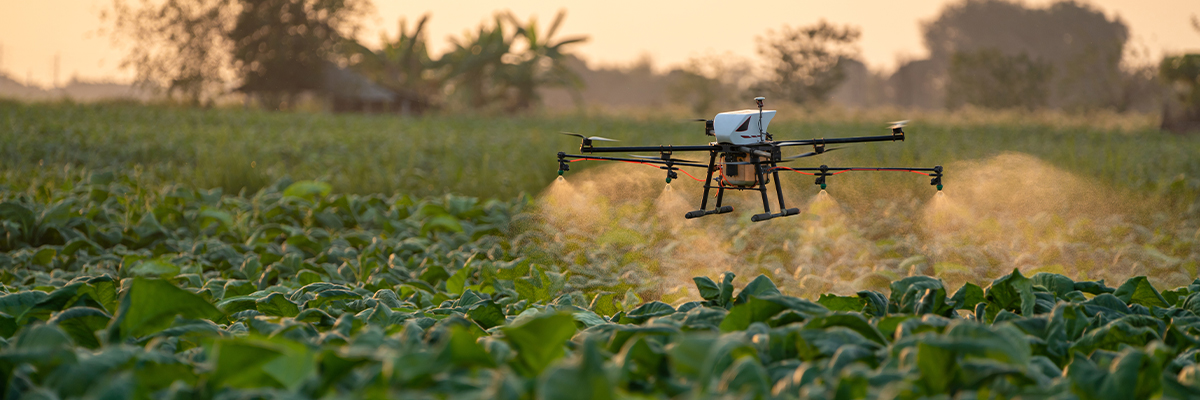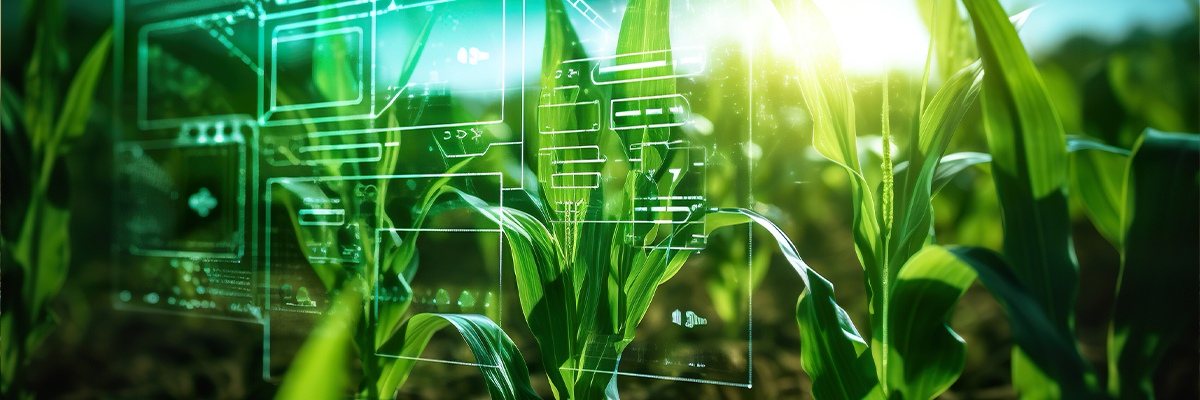Key takeaways
- The agriculture sector is increasingly investing in automation to reduce costs, comply with sustainability regulations and satisfy consumer demand.
- Robotics, drones and AI are revolutionizing tasks like seeding, weeding and harvesting. They frequently offer more efficient and precise alternatives to traditional farming methods.
- The integration of automation in agriculture is leading to a shift in roles, with farmers increasingly acquiring data and technology skills. This paves the way for continued advancements and improvements in the sector.
Farms have always taken advantage of the latest technology to optimize their operations. Recently, that has included digital tools—per a McKinsey & Company survey, 21 percent of farmers across Asia, Europe, North America and South America use farm management software. While less than 5 percent of respondents used fully-automated technology, that number is about to go up. Let’s discuss the trends causing this shift—and some examples of technology farmers are adopting.
.jpg)
Trends driving farm automation implementation
From handling unpredictable weather patterns to fighting off swarms of insects, farmers are used to adapting to keep their operations running. And currently, thanks to certain geopolitical and economic trends, adaptation means investing in automation.
Fertilizer and chemical shortages
Over the past five years, fertilizer prices have risen dramatically. Consider diammonium phosphate. It’s one of the most commonly used fertilizers—and it rose from $200–$400 per metric ton in 2018 to approximately $1200 per metric ton in 2022. No wonder, then, that when surveyed by McKinsey, US farmers stated that chemical prices are their biggest concern. Due to various environmental and political factors, the chemicals they need to grow and protect their crops are in short supply.
Automation can help. For example, per that same McKinsey article, operators at large corn farms found that automated spraying—leveraging data from sensors and machine vision to fertilize at optimal times and locations—reduces chemical costs by 80 percent. And according to John Deere, robotic solutions like their ExactShot technology control fertilizer use on individual seeds to such a degree that it can save 93 million gallons of starter fertilizer annually.
Labor challenges
In agriculture, labor shortages can be disastrous. Just ask farmers in the UK, who saw £60 million worth of food rot in fields in 2022 because they were short-staffed. In addition, farm workers’ pay has gone up. According to the USDA, wages rose 4 percent every year between 2015 and 2022. That’s great for employees, but it does make it harder for operations to make a profit.
Automation comes in handy again here. It improves working conditions. Semiautomated solutions and fully autonomous robots can take on more dull, dirty, dangerous tasks. It also lowers barriers to entry. New employees don’t need as much training before they get to work. Those workers will be more productive, too. One worker might supervise four machines instead of doing all the planting themselves. Farms will get by with fewer workers—and their existing employees will be better paid and more productive.
Sustainability regulations
Governments are nudging their economies in more sustainable directions through a mix of incentives and regulations. This presents new opportunities, but it also comes with potential challenges, particularly as regulators eye how farmers use chemicals.
Consider the European Green Deal. It may require a 50 percent reduction in pesticide use by 2030. Or Canada’s new rules surrounding fertilizer, where farmers who cut fertilizer use by 30 percent by 2030 will be eligible for $1.1 billion in government aid. Rules like these have major implications for the industry. And, as sustainability becomes more of a priority, even more regulations may appear.
Just as automation helps farmers conserve a limited supply of chemicals, it can help farmers comply with regulations around chemical use. Automated equipment can also clear weeds and mow grass constantly—resulting in less need for herbicides and pesticides in the first place.
Consumer demand
Modern consumers want more sustainably made products. According to a 2023 McKinsey US consumer study, between 2018 to 2023, products using environmental, social and governance (ESG)-related claims as selling points averaged 28 percent cumulative growth in sales. Products that didn’t make any such claims only saw 20 percent growth, while sales for products with more than one ESG claim grew roughly twice as fast.
Consumer packaged goods providers are pivoting to meet those demands. Nestlé, for example, has promised to reach net-zero emissions by 2050 and improve the traceability of its raw materials. An operation that can prove its sustainability bona fides through data will be better positioned to sell in this environment. Automation makes gathering and transmitting that data easy—and can lead to higher sales and happier customers.

Automation applications used in agriculture
The agriculture industry has used various mechanized and semiautonomous solutions for decades. We’ve already seen widespread adoption of drones (like the ones made by DJI). But we’re entering an era where automated solutions exist for virtually every step in the farming process. Here are just a few:
Robotics
Workers using various forms of machinery to plant seeds or pull weeds are a common sight in farm country. Less common: fully autonomous robots doing the same thing. But that’s just the case with FarmDroid, a solar-powered, GPS-driven seeding and weeding robot.
Robots are also getting better at delicate tasks like fruit and vegetable picking. For example, Root AI’s Virgo robot uses machine learning to carefully pick tomatoes (and, as it gets smarter, will learn to pick other forms of produce).
Then there’s the Tevel flying autonomous robot, which hovers next to trees 24/7 looking for fruit ready to be plucked. These solutions combine the latest advances in gripping, actuating, machine vision and artificial intelligence (AI) to support human laborers and boost overall revenues. Efficiency and revenues go up while employee stress goes down.
Driverless tractors
Farmers can already hop into their cabs and supervise while the tractor does the driving. But truly driverless tractors will be a game-changer—and companies like John Deere are hard at work making them. Deere revealed a fully autonomous version of its 8R tractor at CES 2022. Farmers can monitor progress through a mobile app, control the tractor remotely or focus on other tasks entirely.
While the 8R is the most prominent example, other major corporations and startups alike are hurrying to develop their own driverless solutions.
AI and data
AI's applications don't stop at controlling pickers or keeping tractors on course. Farmers have access to a wealth of data, be it imagery gathered by drones and satellites, soil moisture levels detected by sensors or yield histories for specific fields.
AI can use that information for a variety of purposes, like ideal planting times, optimum seed spacing and highly targeted use of fertilizer. It can teach drones or other robots to look for pests and diseases. As sustainability becomes more and more important, it can constantly search for ways to improve yields while minimizing consumption of resources. And those are just a few potential applications.

What’s on the horizon
Farm workers will soon find themselves playing multiple roles. The average farmer will also be a data scientist, working with AI to better plan out their next growing season. Pickers in the field will become part-time robotic engineers, learning the basics of maintenance so they can better work alongside their digital counterparts.
Of course, it’s important to remember, that we’re already living in an automated world. In every industry, what once was the future has become the here and now. Agriculture workers are already getting incredible benefits from automated solutions—and whatever is over the horizon will make life even better.
To learn more about where automation is taking agriculture, join us at the Automate Show in Chicago, IL, from May 6–9, 2024. You’ll see new tech in action, talk with fellow professionals from across the industry and build your competitive edge. Register for the Automate Show FREE today!
« View All Blogs
